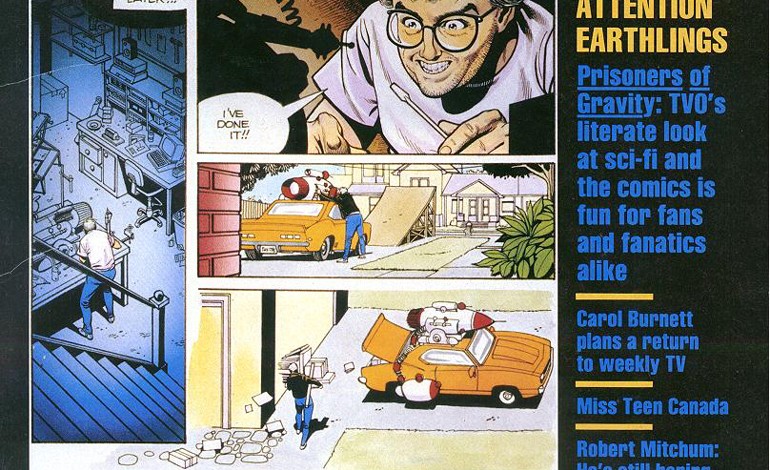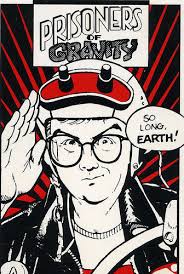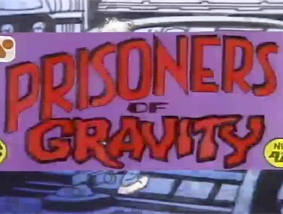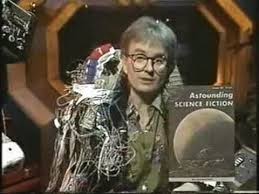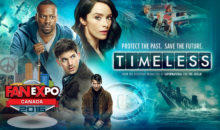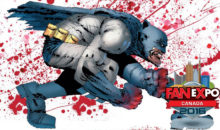Prisoners of Gravity: 25 Years since Commander Rick left Earth
Getting the band back together – this panel had Mark Askwith (creator/ producer) Shirley Brady (producer all seasons), Gregg Thurlbeck (executive-producer and director seasons 2-5), Ty Templeton (artist opening credits and frequent guest) and Rick Green who was the only constant on screen presence as Commander Rick.
Starting in 1989 and running for five seasons and 139 aired episodes , Prisoners of Gravity was the first show to use works of science fiction, computers, fantasy, horror, and comics, to explore sociological themes such as dreams, ecology, chaos, medicine and nanotechnology, memory (and then because they forgot, amnesia) amongst them. During its run, it won several awards including two Prix Aurora Awards, a Broadcast Media Award from the International Reading Association, and two Gemini nominations.
Its wacky premise was that after watching the world try to destroy itself, Rick escaped into space but then ended up on a space station and from orbit was able to hack the signals of TVO show “Second Nature” (for which they filmed opening and closing sequence) and speak to the only people who were examining the issues – those in what is now called fandom.
The panel recounted how the show was originally conceived, first as a series of five minute bookends to Doctor Who episodes, and then as a stand alone show, and the hurdles of actual production. The style was unique in that it wasn’t a profile of different people each week, barring a few exceptions, but each episode would have snippets from 6-20 guest. To break the boredom of a talking head show its conceit of talking to Rick meant that they had to film all interviews from two different angles, to replicate the screens that Commander Rick’s would be looking at as he ‘talked’ to his pre-taped guests, and from season two onwards his NANo-Cybernetic 300 computer (Nancy).
The producer/director for the first season was not as interested in the material, so in the second season Gregg Thurlbeck came aboard, rejigged the opening sequence and joined the team in brain-storming topics, gathering interviews, and working with editor to produce the quirkiest show to hit the air.
Mark Askwith was the creator and first producer on the project. He had been the manager of Silver Snail and assisted Daniel Richler with a segment for The National. Shortly thereafter, Richler moved to TVO and invited Askwith to pitch a show. Askwith knew Rick Green of the comedy troop The Frantics, and invited him to audition as the host. In fact they ended up pulling the show’s title, “Prisoners of Gravity” from Green’s audition tape.
How Shirley Brandy joined the crew is an interesting story in and off itself. The same time that Prisoners was in its first season, TVO was airing Imprint, a show about traditional publishing. Brandy was working for a small Toronto publisher as an editor and she did not like the show’s style. Instead of just complaining to her friends, she wrote a five page letter about what could be done to improve it. She was invited to the studios, for what she thought would be a discussion. It turned out to be a job offer to work on “a funny little show, sort of the bastard child of Imprint“. Askwith had seen the letter and realized that this was a person who understood books AND television, while he was knowledgeable in comics and movies, and when Gregg Thurluck joined the team at the start of the second season, the four of them with Rick Green formed the nexus that propelled the series for the remainder of its run.
Because they had a paper thin budget, they learned many tricks. They could only do a three conventions a year, so they would maximize it in various ways. They would get a hotel suite and when they checked in they’d get 20 lamps, different bedspreads and figure out different chair arrangements so that the one room would look like several locations. Over the years, and with their combined contacts, and later recommedations from other authors, they interviewed Neil Gaiman, Terry Pratchett, Ray Bradbury, Jack Kirby’s final media interview, Frank Miller, Harlan Ellison, Andre Norton, Octavia Butler, Connie Willis (and for many of the female authors, it was their first television interview).
Because of the style of the show, it was an editor’s nightmare. Using actual tape and film, Brian Karn would intercut dozens of short clips between the ‘studio’ portions. Also, since the premise was a hacked signal, Karn figured out how to degrade the look. He did such a good job that they’d often have to send messages up to Master Control (who checks quality as programs air) to let them know that bars and rough edges were supposed to be there.
A question from the audience was when would it be available for purchase. This question led to an interesting discussion of rights, of releases, and of the fact that government owned organizations are loathed to take risks. The opening sequence art, which told the story of how Commander Rick ended up in the satellite, was purchased out right from artist Ty Templeton, as was the music. Since Rick Green is the only ‘actor’, his royalties were the only ongoing cost if it was released.
However, while every guest signed a very encompassing releases – allowing use of the material in perpetuity and in any form, they signed paper forms. All the forms were turned into TVO at the end of the season, but where they are now is unclear. And, without those forms in hand, current management is worried about being able to prove they have the rights to re-release the show.
So while Commander Rick might still be in geosynchronous orbit around the Earth, we will be unlikely to hold copies of his communiques in our hands any time soon.
Happy 25 years Commander (and team!)

